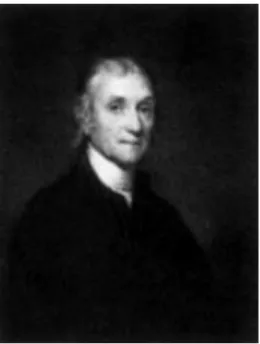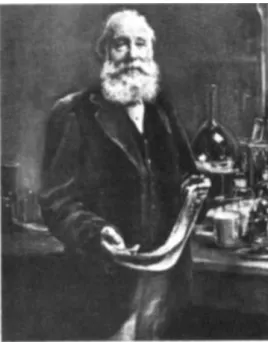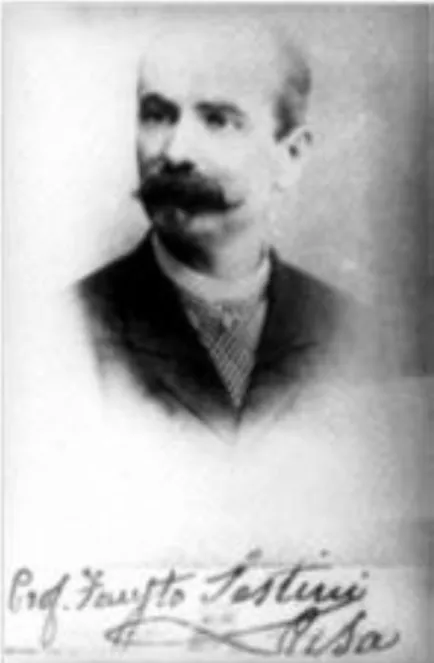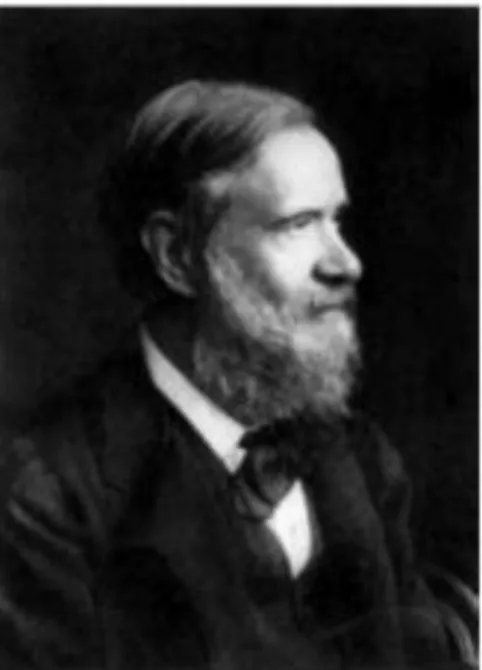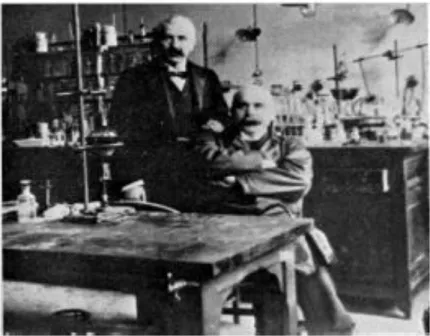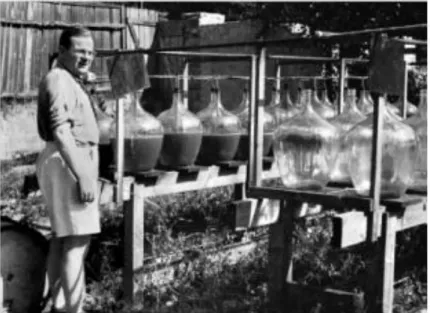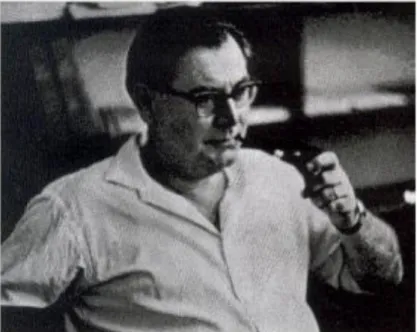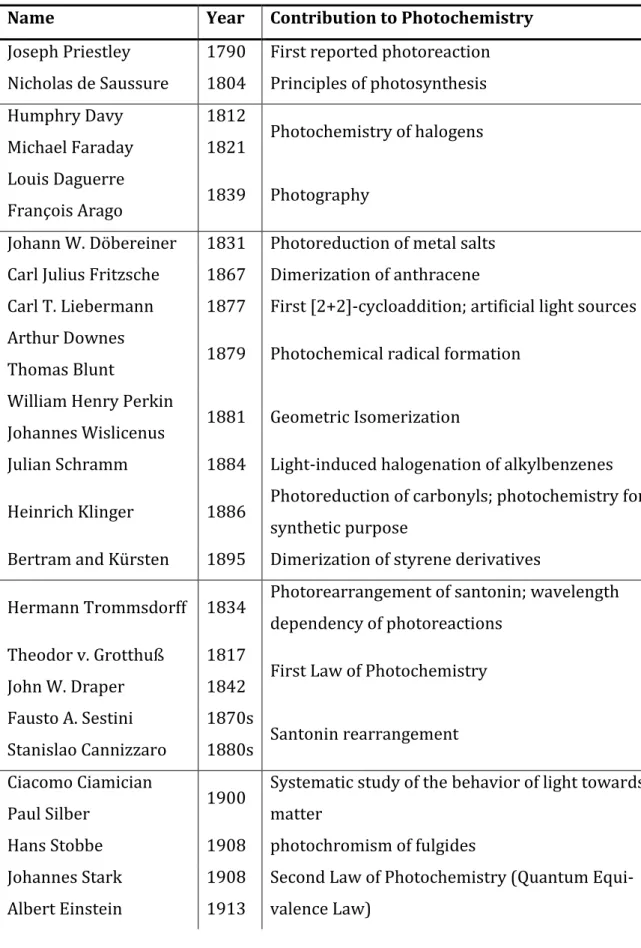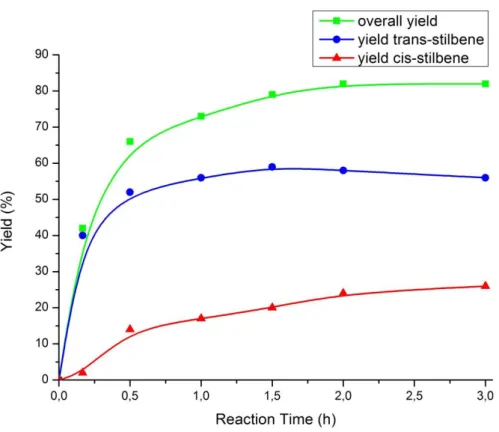P HOTOCATALYTIC S INGLE -E LECTRON T RANSFER R EACTIONS : T HE P HOTO -M EERWEIN A RYLATION
Dissertation
zur Erlangung des Doktorgrades der Naturwissenschaften (Dr. rer. nat.)
an der Fakultät für Chemie und Pharmazie der Universität Regensburg
vorgelegt von Peter Schroll aus Schwabmünchen
2014
The experimental part of this work was carried out between November 2010 and August 2014 of under the supervision of Prof. Dr. Burkhard König at the Institute of Organic Chemistry, University of Regensburg, Germany.
The PhD thesis was submitted on: December 19, 2014 The colloquium took place on: February 26, 2015
Board of examiners:
Prof. Dr. Manfred Scheer (Chairman)
Prof. Dr. Burkhard König (1st Referee) Prof. Dr. Hans-Achim Wagenknecht (2nd Referee)
Prof. Dr. Joachim Wegener (Examiner)
„Das Staunen ist der Anfang der Erkenntnis.“
Platon
A CKNOWLEDGMENTS
Completing this thesis would not have been possible without the help from numerous people. Their support is gratefully acknowledged.
At first, I offer my sincerest thanks to my advisor, Prof. Dr.
Burkhard König, for allowing me to join his group and for giving me the opportunity to work on interesting tasks. I am grateful to him for believing in my potential. Without the possibility to independently work on challenging projects, I would certainly possess far less tenacity in overcoming problems.
To the members of the research training group “Chemical Photocatalysis” (GRK 1626). In all projects, I benefited from the network offered by the Deutsche Forschungs- gemeinschaft (DFG). In various seminar and training days I got the possibility to discuss ideas and problems and meet scientists who presented the latest developments in our research field. Moreover, I am thankful for the financial support at the beginning of my PhD.
To the Evonik Foundation represented by Mrs. Sticht, Mrs.
Peitzmann, and Prof. Leuchtenberger, I am indebted to them, not only for funding my work but also for giving me the opportunity to get connected to their company and for the excellent times we had at different Evonik meetings. I am also very thankful to all stipends of the Evonik Foundation and for helpful discussions we had especially with Michael Kessler, Hanna Hong, and Benedikt Prior.
To my extended family, I cherished your continual encouragement throughout my education. An outstanding role plays my dear darling Sophie with all her love and support over the past years. Graduate school would have been unbearable, and perhaps impossible, without you. Special thanks go to my brother Jürgen on whose
advice I relied heavily and to my parents for their support and trust in me. Without their love and help, I would not have made it to this point.
To all co-workers of the König group, past and present, for the discussions and help they offered. I am grateful to all members of the photocatalysis subgroup, especially Durga Prasada Rao Hari, Thea Hering, and Susanne Kümmel for their intellectual contributions to my research and all discussions and help they offered.
My best wishes go to Charlie Fehl who made our collaboration a real pleasure.
Additional thanks go to the people who introduced me to various apparatuses.
First of all, I thank Andreas Hohenleutner and Andreas Müller for sharing their experience in fluorescence spectroscopy with me, Stephan Dankesreiter for his generous help with UV/Vis reflectance spectra, and Nils Sorgenfrei who was my expert for 2D-NMR spectroscopy. Manuel Bause helped me to solve all kind of troubles a computer is able to cause. I thank all the permanent staff for help with CV, HPLC, GC, and administrative things.
To the members of the analytical department, Joseph Kiermeier, Wolfgang Söllner and Carola Prockl for recording mass spectra, Annette Schramm for her help in NMR spectroscopy and Rudi Vasold for GC and HPLC measurements.
I also thank my former colleagues, Ralf Moritz, Stefan Braun, and Johannes Beutler whose friendship is still of importance to me. I thank Florian and Kevin for all sportive and non-sportive activities. Special thanks go to Philipp Peter and Sebastian Maderlehner for our daily lunchtime meetings and the entertaining discussions therein.
Finally, I extend my thanks to my labmates Anna Eisenhofer and Anika Kolb as well as to our trainees Viktoria Meßmann and Ramona Gratzke for the good time we had and to all my undergraduate students sharing their time with me in the lab, namely Maria Englhart, Dominik Gärtner, Wolfgang Kaiser, Benjamin Kraus, Simone Stark, Vanessa Haas, Franziska Naporra, Tobias Feldner, Florian Semmel- mann, Daniela Zeitler, and Katharina Häckl.
Meiner lieben Sophie
T ABLE o F C ONTENTS
1 EARLY PIONEERS oF ORGANIC PHOTOCHEMISTRY ...1
1.1 Prologue ... 2
1.2 From Photochemistry of Halogens to Photography ... 3
1.3 Single Discoveries in Photochemistry ... 4
1.4 Photochemistry of Santonin ... 11
1.5 Ciamician – A Systematic Study ... 16
1.6 Developments in the Twentieth Century ... 25
1.7 Key Steps in Early Organic Photochemistry ... 29
1.8 References ... 31
2 PHOTOCATALYTIC ARYLATION oF ALKENES, ALKYNES, ENONES, aND HETEROARENES wITH DIAZONIUM SALTS:THE PHOTO-MEERWEIN ARYLATION ... 39
2.1 Introduction... 40
2.2 Results and Discussion ... 42
2.3 Conclusions ... 55
2.4 Experimental Part ... 56
2.4.1 General... 56
2.4.2 Photoproducts ... 61
2.4.3 Trapped Intermediates ... 76
2.5 References ... 79
3 PHOTOCATALYTIC SURFACE PATTERNING oF MODIFIED CELLULOSE USING DIAZONIUM SALTS aND VISIBLE LIGHT ... 89
3.1 Introduction to Surface Modification ... 90
3.2 Results and Discussion ... 91
3.3 Conclusions ... 99
3.4 Experimental Part ...100
3.4.1 Instruments, Methods, and Materials ...100
3.4.2 Synthesis of Substrates ...102
3.4.3 Photocatalytic Experiments ...106
3.4.4 Spectroscopic Data ...108
3.5 References ...109
4 PHOTOCATALYTIC -OXYAMINATION oF STABLE ENOLATES, SILYL ENOL ETHERS, aND 2-OXOALKANE PHOSPHONIC ESTERS ... 113
4.1 Introduction ...114
4.2 Results and Discussion ...115
4.3 Conclusions ...123
4.4 Experimental Part ...124
4.4.1 Instruments, Methods, and Materials ...124
4.4.2 Synthesis of Substrates ...125
4.4.3 Glass Microreactor and Irradiation Setup ...131
4.4.4 Photocatalytic Experiments ...132
4.4.5 Cyclic Voltammograms ...139
4.4.6 NMR Spectra ...140
4.5 References ...144
5 SUMMARY ... 150
6 ZUSAMMENFASSUNG ... 152
7 ABBREVIATIONS ... 155
8 APPENDIX ... 158
8.1 Publications ...158
8.2 Conferences ...159
8.3 Poster Presentations ... 159
8.4 Curriculum Vitae ... 160
9 INDEX ... 162
9.1 List of Figures... 162
9.2 List of Schemes ... 163
9.3 List of Tables ... 165
9.4 Subject Index ... 166
1 E ARLY P IONEERS o F O RGANIC P HOTOCHEMISTRY
A summary of the beginnings of organic photochemistry from a synthetic point of view is presented. Accidentally discovered reactions driven by light as well as systematic studies on the behavior of light towards matter leading to the development of a new branch of chemistry are discussed. A shortened version of the text has been published in the textbook “Chemical Photocatalysis”:
Peter Schroll, “Early Pioneers of Organic Photochemistry”
In: Chemical Photocatalysis (Editor: Burkhard König)
Walter de Gruyter GmbH & Co. KG, Berlin/Boston, 2013, 3-18 ISBN: 978-3-11-026924-6
Author contributions: Peter Schroll is the only author.
Reprint permissions for the presented photographs by the publishing companies ACS, Wiley-VCH, and the Bunsen-Gesellschaft für physikalische Chemie e.V. are gratefully acknowledged.
1.1 Prologue
“When oil will have been all burned in our prodigal industries, it may become necessary, even on social grounds, to come to exploit solar energy.”[1] This foresightful statement fits perfectly into modern debates at the beginning of the twenty-first century about the necessity of using renewable energies and sustainable chemistry, but is in fact more than one hundred years old, written by Giacomo Ciamician, an early pioneer of organic photochemistry. He was a visionary chemist who was invaluable in developing photochemistry, an upcoming science at the beginning of the twentieth century. Apart from his credits to discover several new photochemical reactions, he was the first to establish a systematic study on the behavior of light towards matter. He realized nature as being the role model in terms of the conversion of sunlight into chemical energy and stood up for the use of synthetic methods as mild as those nature uses. In this respect, Ciamician can be considered as the inventor of the concept of green chemistry. He was also interested in using photochemical processes on an industrial scale since he realized fossil fuels as not being inexhaustible.[2]
Although the development of synthetic methods using light-energy has attracted much attention during the last decade, chemical transformations under the influence of light are known for more than 200 years. In 1790, Joseph Priestley (1733 – 1800) exposed partially filled vials of “spirit of nitre” (nitric acid) to sunlight and observed a reddish color, which was attributed to the formation of nitrogen dioxide (Figure 1). This first photochemical reaction in the gas phase marks the beginning of photochemistry.[3] Moreover, Priestley is given credit for discovering basic principles of photosynthesis, the most important photochemical process for living organisms on earth based on the transformation of light energy into chemical energy. He “fully ascertained the influence of light in the production of dephlogisticated air (oxygen) in water by means of a green substance,” which was identified as tiny plants.[3, 4] After Nicholas Theodore de Saussure (1767 – 1845) had shown in 1804 that the influence of light causes plants to consume water and carbon dioxide and to generate oxygen, a fundamental understanding of the process of photosynthesis in green plants had been discovered.[3, 5]
a
1.2 From Photochemistry of Halogens to Photography
Halogens played an important role in early photochemical experiments. The English chemist Sir Humphry Davy (1778 – 1829) used sunlight to produce phosgene out of a mixture of chlorine and carbon dioxide in 1812.[6] Michael Faraday (1791 – 1867), an assistant to Humphry Davy, continued studies on the behavior of chlorine towards light and found in 1821 that sunlight promoted the addition of chlorine to ethylene to form 1,2-dichloroethane and the addition to benzene to give 1,2,3,4,5,6-hexachlorocyclohexane.[7, 8] John W. Draper (1811 – 1882), the first President of the American Chemical Society, reported the formation of “pure hydrochloric acid gas” after a violent reaction between hydrogen and chlorine initiated by a beam of sunlight. [8, 9] During his studies of halogens and their salts Humphry Davy discovered the light sensitivity of silver iodide, which created the chemical basis for the process of photography.
An appropriate technique to make photography manageable was developed by the French painter Louis Daguerre (1787 – 1851). He used silver iodide coated plates made from a silver plated piece of copper which had been fumed with iodine
aH. D. Roth, The Beginnings of Organic Photochemistry. Angew. Chem. Int. Ed. 1989, 28, 1193-1207.
Copyright Wiley-VCH Verlag GmbH & Co. KGaA. Reproduced with permission.
Figure 1: Joseph Priestley, English philosopher, chemist, and physicist. Figure 1: Joseph Priestley, English philosopher, chemist, and physicist.a
vapor. Light was focused on these plates by a camera obscura. The breakthrough came with the observation that the image could be brought to permanent visibility by chemical means. Treatment of the latent image with mercury fumes followed by removal of access silver iodide with sodium chloride or sodium thiosulphate solution as a fixer shortened exposure times from hours to minutes.[10, 11] The invention was announced to the French Academy of Sciences by the physicist François Arago (1786 – 1853).[12] The year 1839 is considered as the birth of chemical photography. For decades, photography was the most important application of photochemical processes.
1.3 Single Discoveries in Photochemistry
The following years were characterized by accidental discoveries of photo- chemical reactions. Several researchers contributed to the new field of photochemistry by discovering single reactions. Among the first reaction types were reductions, cycloadditions and photodimerizations, homolytic cleavage of molecules, geometric isomerizations, light-induced halogenations, and photo- reductions of carbonyl compounds.
Reduction
As early as 1831, Johann Wolfgang Döbereiner (1780 – 1849) reported the light-induced reduction of metal ions by oxalic acid.[3, 13] In the case of an aqueous solution of oxalic acid and iron(III) oxide irradiated by sunlight, he obtained carbon dioxide and humboldtite, a basic iron(II) oxide. Similarly, he reduced salts of platinum, silver and iridium. In each case, the result was checked by control experiments in the dark. Unfortunately, he was not able to report the first photo- reaction of a ruthenium compound, whose complexes today serve as powerful photocatalysts, since ruthenium was discovered thirteen years later in 1844.
Cycloaddition
Carl Julius Fritzsche (1808 – 1871) observed the light sensitivity of anthracene in 1867: “When a cold, saturated solution [of anthracene] is exposed to
sunlight, microscopic crystals begin to precipitate.”[3, 14] Control experiments in the dark proved that indeed a light reaction occurred and that the original material could be regenerated by heating the photoproduct to the melting point (Scheme 1).
However, it took another twenty-five years to recognize the photoproduct 2, being the dimer of anthracene 1, as a result of a [4+4]-cycloaddition.[15] In this case, the photoreaction was discovered due to the fact that the photoproduct was less soluble than the starting material.
In 1877, Carl Theodor Liebermann (1842 – 1914), a German chemist working in Berlin and known for the synthesis of the dye alizarine, observed the conversion of yellow crystals of thymoquinone 3 (2-isopropyl-5-methylbenzo- quinone) into a white, hardly soluble photoproduct 4 in sunlight within four days (Figure 2).[16] This was the first example of a [2+2]-cycloaddition of a quinone and an important step in solid-state photochemistry (Scheme 2).
Photochemical [2+2]-cycloaddition is an important but undesired reaction in living organisms. Light-induced photodimerization of thymine causes DNA damage. Fortunately, the enzyme photolyase is able to regenerate both DNA bases (Scheme 3).[17]
1 2
3 4
5 6
Scheme 1: Anthracene dimerization as a result of photochemical [4+4]–cycloaddition.
Scheme 2: The first photochemical [2+2]–cycloaddition.
Although Liebermann dealt also with photodimerization of olefinic compounds, credit for the discovery of the first photodimerization of a styrene derivative in 1895 has to be given to J. Bertram and R. Kürsten, two chemists working in industry. They were the first to report a light-induced reaction of -methyl- coumaric acid crystals 7 which was found to rearrange after 14 days of irradiation with sunlight to form a white powder. Analysis yielded the photoproduct being the dimer of -methylcoumaric acid. Moreover, the structure of the product was predicted correctly since the researchers noticed the disappearance of the double bonds and a four-membered cyclobutane ring being formed. Analogously, a photo- dimerization of cinnamic acid 9 to -truxillic acid 10 was studied (Scheme 4).[18]
From these extensive studies, their conclusions were more precise and deeper in understanding than the almost simultaneous examinations of Liebermann on the photodimerization of styrene derivatives and diolefin dicarboxylic acids such as cinnamylidenemalonic acid 11, whose structure had not been clarified until 1902 at Liebermann’s instance (Scheme 5).[19-21]
7 8
9 10
11 12 10
Scheme 4: The first reported photochemical dimerization of a styrene derivative.
Scheme 5: Photodimerization of cinnamylidenemalonic acid.
It is worth mentioning that Liebermann was the first to test artificial light sources since early photochemists used sunlight as the only and most important source of radiation at that time. He found his photoreactions also took place by using an electric arc lamp or candlelight instead of sunlight.[20]
b
Homolytic Cleavage
In 1877, the same year when Liebermann reported the dimerization of thymoquinone, the American scientists Sir Arthur H. Downes (1851 – 1938) and Thomas P. Blunt (1842 – 1929) recognized the effect of light upon organisms.[22]
It could be shown that parts of the sunlight are able to kill bacteria. Their ongoing research on therapeutic application of sunlight resulted in the 1903’s Nobel Prize in Physiology and Medicine “for the treatment of diseases … by means of con- centrated light rays” that was awarded to Niels Finsen.[8] Two years later, in 1879, Downes and Blunt published a paper in Nature entitled “the effect of sunlight upon hydrogen peroxide”.[23] Its topic was profound: for the first time, photochemical free-radical formation was proposed. On the basis of their observation that hydrogen peroxide in solution is completely destroyed after ten months of irradiation, they concluded a homolytic bond cleavage of H2O2 into two hydroxyl radicals. Similarly, a cleavage of the chlorine molecule into the free radicals was
bH. D. Roth, The Beginnings of Organic Photochemistry. Angew. Chem. Int. Ed. 1989, 28, 1193-1207.
Copyright Wiley-VCH Verlag GmbH & Co. KGaA. Reproduced with permission.
Figure 2: Carl Theodor Liebermann, a pioneer of solid-state photochemistry.
Figure 2: Carl Theodor Liebermann, a pioneer of solid-state photochemistry.b
proposed (Scheme 6). The modernity of their description is remarkable since the concept of electron pair bonds was introduced several decades later. Moreover, the existence of free radicals had not been shown by Moses Gomberg until the year 1900. Although the discovery made by Downes and Blunt had been published in a major journal, it had not found great attention and was rediscovered only very recently after it had been overlooked for more than 130 years.[8]
Geometric Isomerization
Cis-trans isomerization is one of the most common photochemical reactions.
The first geometric isomerization of olefins was reported by William Henry Perkin (1838 – 1907) in 1881 (Figure 3). He irradiated 2-alkoxycinnamic acid and obtained the “-isomer.”[24] Later, Liebermann found out that iodine accelerates the photochemical cis-trans isomerization of aromatic unsaturated acids such as -phenylpentadienoic acid.[20] Johannes Wislicenus (1835 – 1902) was able to extend the method to nonaromatic systems. Amongst others, when he irradiated maleic acid 13 in an aqueous solution of bromine, fumaric acid 14 was obtained (Scheme 7).[3, 25] It is no surprise that in these early days the biochemical relevance of this kind of reaction could not have been evaluated. But as we know today, the discovery of geometric isomerization is of high importance in the process of vision of vertebrates. The basic photochemical process herein is the isomerization of 11-cis-retinal to its all-trans-form. Retinal is a powerful absorber and a prosthetic group of the photoreceptor molecule rhodopsin.[26]
by homolytic cleavage of hydrogen peroxide and chlorine.
13 14
Scheme 6: Photochemical radical formation
Scheme 7: Geometric isomerization of maleic to fumaric acid upon irradiation.
c
Light-Induced Halogenation
Halogens played an important role in Julian Schramm’s (1852 – 1926) photochemical experiments in Lemberg as well. Between 1884 and 1888 he studied the light-induced bromination of alkylbenzenes 15 and found out “that light and darkness work in the same way as elevated and low temperatures, respectively.”[27] At that time it was known that the selectivity of a halogenation reaction is temperature-dependent: at low temperatures, the aromatic ring is halogenated while at elevated temperatures a substitution reaction occurs at the alkyl side chain. The new aspect of his work was the finding that the halogenation reaction can be carried out with light and that the selectivity can be controlled using light or darkness: irradiation with sunlight or magnesium light led to products substituted in the side chain whereas reactions in the dark gave products substituted at the aromatic ring (Scheme 8).[28-32] Moreover, Schramm was the first to realize the potential of this type of reaction for industrial application.[30] Today, photochlorination is an important tool in industrial synthesis.
cH. D. Roth, The Beginnings of Organic Photochemistry. Angew. Chem. Int. Ed. 1989, 28, 1193-1207.
Copyright Wiley-VCH Verlag GmbH & Co. KGaA. Reproduced with permission.
Figure 3: William Henry Perkin.
Figure 3: William Henry Perkin. He examined the first light-induced geometric isomerizations.c
Photoreduction of Carbonyl Compounds
An impressive example of an accidental discovery of a new reaction is given by Heinrich Klinger (1853 – 1945). During his attempts to convert benzil to isobenzil in an aqueous solution of ether, he observed the unexpected formation of crystals. A close examination showed that the outcome of the reaction was not reproducible. Looking for the unknown parameter, he realized that “some of the tubes were exposed to sunlight in the morning hours.” The crystals were identified as a molecular complex of benzil and benzoin. Hence, in 1886, Klinger had observed the first light-mediated reduction of a keto group to the corresponding alcohol. Analogously, phenanthrenequinone 19 could be reduced to phenanthrene- hydroquinone 20 (Scheme 9).[33] A subsequent study of different ketones led to interesting results. Especially when ether as the solvent was replaced by various aldehydes, the outcome of the photoreaction was different. Under the influence of light, the ketone and the aldehyde formed a new photoproduct. In case of phenanthrenequinone, the ketone underwent reduction followed by esterification of the oxidized aldehyde to give 21.[34] para-Benzoquinone was also reduced under these conditions, but behaved differently. A new carbon-carbon bond was formed instead of an ester (Scheme 9).[35] The intermolecular photoreaction of para-benzo- quinone 22 with benzaldehyde, for example, resulted in the formation of the new photoproduct 2,5-dihydroxybenzophenone 23 (R = phenyl).[36] Klinger called these reactions “synthesis by sunlight” and observed a “synthetic effect of light” which he compared to photosynthesis in living plants.[34, 37] By means of colored filter solutions, he found out that his photoreactions worked best in blue light whereas photosynthesis was most efficient using red light. Moreover, he performed his reactions in special glassware such as tubes and capillaries for ideal irradiation conditions. Heinrich Klinger is considered to be the first to use photoreactions for synthetic purposes.[3]
15a–d
17a–d 16a–d 18a–d
Scheme 8: Selectivity of alkylbenzene halogenation under different conditions.
1.4 Photochemistry of Santonin
The longest known photoreaction of an organic compound is the rearrangement of santonin 24, a sesquiterpene that was formerly used as an anthelmintic drug, but is today replaced by less toxic agents.[3] In 1834, Hermann Trommsdorff (1811 – 1884), a pharmacist in Erfurt (Germany), observed a color change of santonin crystals from white to yellow followed by crystal burst after exposure to sunlight.[38] In addition, he examined the wavelength dependency of the reaction by means of a prism. He found out that the yellow color of the crystals appeared after irradiation with direct sunlight as well as with violet and blue rays, but not with green, yellow or red beams. Looking back, this was a remarkable result for the first half of the nineteenth century, since not much was known about the nature of light at that time.
The understanding of photophysical effects was poorly developed. But a very important physical principle had been found by the German chemist Theodor von Grotthuß (1785 – 1822) in 1817 and, some years later in 1842, independently from this work, by the aforementioned American John W. Draper. It says that light must be absorbed by a substance in order for a photochemical reaction to take place. Today, their observation is known as the Grotthuß-Draper law or the first law of photochemistry.[39]
19
20 21
22 23
Scheme 9: Photoreduction of ketones.
Further investigations by Trommsdorff led to the result that santonin and its photoproduct were isomers. However, both structures could not be determined exactly with the analytical methods of these days. The problem remained unsolved.
Several years later, Fausto Alessandro Sestini (1839 – 1904), an Italian chemist working in Rome, was faced with the problem of santonin and its photoreaction (Figure 4). Sestini was the first among a series of excellent Italian photochemists, often considered to be the founder of photochemistry in Italy, whose development was closely related with the photoreaction of santonin. Italy, as it turned out, would become a center of research for photochemical reactions. In contrast to Trommsdorff’s experiments in the solid state, Sestini examined the photoreaction of santonin, C15H18O3, in solution.[40-42] He obtained “photosantonin”, a diethyl ester. Irradiation in acetic acid yielded photosantonic acid 28, C15H20O4, as the final product.
d
Through Sestini, Stanislao Cannizzaro (1826 – 1910) became introduced to photochemistry (Figure 5).[43, 44] Cannizzaro and co-workers discovered an additional intermediate of the reaction which they called isophotosantonic acid and whose structure had been determined to be C15H22O5.[45-49] In summary, Sestini and Cannizzaro discovered basic structural elements of santonin and its
d H. D. Roth, The Beginnings of Organic Photochemistry. Angew. Chem. Int. Ed. 1989, 28, 1193-1207.
Copyright Wiley-VCH Verlag GmbH & Co. KGaA. Reproduced with permission.
Figure 4: Fausto Alessandro Sestini, the originator of photochemistry in Italy. d
photoproduct such as the lactone and the acid moiety. But it was only in the middle of the 20th century when the structure of santonin, its intermediates and the mechanism of its formation had been elucidated.[50-55] In all, from its first description to the final solution, it took 130 years for the problem of the santonin photorearrangement to be solved.
e
Today we know that santonin 24 and photosantonic acid 28 have different crystal structures, which offer an explanation for Trommsdorff’s observation that sunlight causes crystals of santonin to burst. The pathway for the rearrangement is the following: from its excited state, parts of the santonin molecule undergo ring- contraction from a six-membered to a five-membered ring to form lumisantonin 25. Lumisantonin is not stable and forms another six-membered ring out of a five- and a three-membered ring. The resulting structure 26 undergoes ring-opening to form a ketene 27 which yields the final product after water addition. Photosantonic acid 28 is thus the irradiation-hydration product (Scheme
10).[51, 53, 54]
e H. D. Roth, The Beginnings of Organic Photochemistry. Angew. Chem. Int. Ed. 1989, 28, 1193-1207.
Copyright Wiley-VCH Verlag GmbH & Co. KGaA. Reproduced with permission.
He introduced Ciamician and Silber to photochemistry.
e
Figure 5: Stanislao Cannizzaro. e
e
In his laboratory in Rome, Cannizzaro introduced Giacomo Ciamician, Paul Silber and Emanuele Paternò to photochemistry, all becoming researchers who had great influence in the development of this new branch of chemistry.[49]
Giacomo Ciamician (1857 – 1922) was an Italian chemist of Armenian descent who joined the Cannizzaro group in 1881 where he, too, was faced with the problem of the santonin reaction (Figure 6). In summer 1885, he started the first photochemical examinations.[56] Soon the German Paul Silber (1851 – 1932) joined his projects and became his co-worker for the next 30 years, until World War I ended their partnership.[57] The skills of both researchers, with “Ciamician as the genial and critical research director” and “Silber as the skilled and patient experimenter”, being able to isolate and identify even labile photoproducts, made this collaboration “a profitable partnership”.[58]
27
24 25 26
28 Scheme 10: Photorearrangement of santonin to photosantonic acid.
f
They discovered the photoreduction of nitrobenzene 29 to aniline 31 and 2-methylquinoline 33 in an alcoholic solution after five months of solar irradiation and found out that a solution of para-benzoquinone in ethanol is converted to the corresponding hydroquinone and acetaldehyde (Scheme 11).[56, 57] Although the work had been carried out independently from Klinger’s photoreduction of ketones in Bonn (Germany), the latter was several months faster in publishing his results and claimed this field for his own research, which was possible in the nineteenth century. Thus, Ciamician’s and Silber’s first excursion in the field of organic photochemistry had come to a sudden end. They did not continue their work in photochemistry for the next 14 years.
f Reprinted with permission from: N. D. Heindel, M. A. Pfau, A profitable partnership: Giacomo Ciamician and Paul Silber. J. Chem. Educ. 1965, 42, 383. Copyright 1965 American Chemical Society.
29 30 31 32 33
Figure 6: Giacomo Ciamician and Paul Silber.
Scheme 11: Photoreduction of nitrobenzene to aniline.
Figure 6: Giacomo Ciamician (left) and Paul Silber (right). Their work surpassed any previous effort in photochemistry.f
Scheme 11: Photoreduction of nitrobenzene to aniline. The oxidation product, acetaldehyde, undergoes condensation with the reduction product, aniline, to form 2-methylquinoline under acidic conditions during the work-up process.
1.5 Ciamician – A Systematic Study
Restarting in 1900, Ciamician and Silber conducted the first systematic study of the behavior of organic compounds toward light.[58] This was the most complete study of the effect of light on chemical reactions at that time. The variety of photochemical reactions reported by Ciamician and Silber had been published in a series of 34 papers called “Chemische Lichtwirkungen” (chemical actions of light) between 1900 and 1915.[59-92] The reactions can be divided into several groups according to their mechanism: intermolecular hydrogen abstraction by excited carbonyls, hydrogen abstraction by nitro compounds, fragmentations, poly- merizations and condensations, autooxidations, and rearrangements.[93, 94]
Hydrogen Abstraction by Excited Carbonyls
The first and largest group of reactions deals with oxidation and reduction reactions as a result of hydrogen transfer initiated by excited carbonyls.
Ciamician’s earliest photochemical experiment, the photochemistry of quinone and alcohol, is a light-mediated redox reaction. In its most general form, an alcohol 34 reacts with para-benzoquinone 35 to give an aldehyde 36 as the oxidation product and hydroquinone 37 as the reduction product under irradiation with sunlight (Scheme 12).
The reaction is of synthetic value in both directions. As far as the oxidative side is concerned, a mild and selective oxidation of primary alcohols to aldehydes was found. Ethanol was found to be oxidized to acetaldehyde and benzylalcohol to benzaldehyde, for example. Secondary alcohols were oxidized to ketones, e. g.
isopropanol to acetone or glucose to glucosone, the oxidation product of the 2’-hydroxy group of glucose giving the corresponding ketone. Furthermore, polyalcohols were oxidized to sugars, as demonstrated by the reactions of glycerol to glyceraldehyde, erythrol to erythrose, and mannitol to mannose.
34 35 36 37 Scheme 12: Light-mediated redox reaction of carbonyls in alcoholic solution.
Taking the reducing side, benzoquinone was transformed to hydroquinone. The reduction was also successful for a range of other carbonyls. Benzo- and acetophenone 38a and 38b, respectively, were found to undergo photopinacoli- zation, since aromatic ketones underwent clean bimolecular reduction to pinacols 40a and 40b in the presence of an alcohol as a reducing agent. Benzaldehyde 38c and its derivatives gave hydrobenzoins 40c and alloxane 42 was converted to alloxantin 43 in a reductive dimerization reaction after two months of irradiation (Scheme 13). These reactions were of preparative interest.
In a similar way, the reaction was used for the light-driven reductive alkylation of ketones. The reaction worked well with aliphatic ketones and alcohols but was particularly efficient when aromatic ketones or alcohols were used. Benzophenone 44a in the presence of benzylalcohol 45a, for example, gave the alkylated product triphenylethylene glycol 46a (Scheme 14).
Hydrogen Abstraction by Excited Nitro Compounds
Another group of photooxidants for both inter- and intramolecular reactions is the nitroaromatics. They were found to be reduced to the corresponding anilines upon irradiation in alcohols (see Scheme 11 above). In a detailed study it was shown that the reaction proceeds stepwise through the formation of nitroso and hydroxylamine intermediates. Of particular importance was the fast intra-
38a–c 39 40a–c 41
42 43
44a–c 45a–c 46a–c
Scheme 13: Photopinacolization of carbonyls.
Scheme 14: Light-induced reductive alkylation of ketones.
molecular reaction of ortho-nitrobenzaldehyde 47 to ortho-nitrosobenzoic acid 48 (Scheme 15). A few minutes of irradiation were sufficient to get complete conversion whereas most other conversions typically were in the time scale of months or even years. Nowadays, intramolecular hydrogen abstraction by a nitro group is widely used in terms of the ortho-nitrobenzyl moiety as a photoremovable protecting group.
Fragmentations
Ciamician and Silber also used sunlight for bond-cleavage. Again, carbonyl compounds had been found to be active towards this reaction pathway. In aqueous solutions of cyclic ketones, the carbon-carbon bond adjacent to the carbonyl group was cleaved leading to two different products: open-chain saturated acids and unsaturated aldehydes. For example, the cleavage of cyclohexanone 49a yielded hexanoic acid 52a and -hexenal 54a. This reaction was noticed to be an appropriate process for the synthesis of fatty acids out of cyclic ketones. In the reaction of 2-methylcyclohexanone 49b or menthone 49c, the regioselectivity of the cleavage could be clearly determined: the higher substituted carbon-carbon bond adjacent to the carbonyl group was found to break (Scheme 16).
-Cleavage was also found to occur in aliphatic ketones. Irradiation of an aqueous solution of acetone 55a gave acetic acid 58 and methane 59a – a formal hydrolysis of the carbon-carbon bond. -Cleavage is today known as the Norrish Type I reaction. The name was established after detailed examinations in the gas phase by the English chemist Ronald George Wreyford Norrish (1897 – 1978) in the 1930s.[55, 95-98] With pinacolin 60 (3,3-dimethylbutan-2-one), acetic aldehyde 63 and isobutylene 64 was obtained. The latter product was the result of a Norrish Type II reaction, as it was called later (Scheme 16). The identification of all products must be attributed to the extraordinary experimental skills of the scientists since it was very difficult to characterize aliphatic aldehydes at that time.
47 48
Scheme 15: Intramolecular hydrogen abstraction by nitro compounds.
Polymerizations and Condensations
Reactions forming new bonds were summarized as “polymerization and condensation reactions”. The term polymerization included the formation of dimers as it is the case in [2+2]-cycloaddition reactions of unsaturated compounds.
Additional substrates undergoing this kind of transformation have been reported by Ciamician and Silber in reactions demanding skill and patience. The dimerization of stilbene 65 in solution was reported after two years and four months of irradiation. A coumarin dimer 68 was found whose syn head-to head structure was finally proven in 1962 (Scheme 17).[99]
49a–c 50a–c a: R1 = R2 = H
b: R1 = Me, R2 = H c: R1 = iPr, R2 = Me
51a–c 52a–c
53a–c 54a–c
55a–b 56 57a–b 58 59a–b
60 61 62 63 64
65 66
67 68 Scheme 16: -Cleavage of carbonyls: Norrish Type I and II reaction.
Scheme 17: Intermolecular [2+2]-cycloaddition reactions in solution.
Besides intermolecular [2+2]-cycloadditions, the first intramolecular reaction was found in case of the monoterpene ketone carvone 69, which gave an isomeric product in a clean reaction, whose structure could not be determined exactly by Ciamician and Silber. They proposed the tricyclic product carvonecamphor 70 to be formed. The proposal was found to be correct in 1957 (Scheme 18).[100]
A similar reaction including the [2+2]-cycloaddition of an olefin and a carbonyl group giving oxetanes 73 was discovered by another important Italian pioneer of photochemistry, Emanuele Paternò (1847 – 1935), in Rome in 1909.[101] The reaction was improved in 1954 by the Swiss-American chemist George Hermann Büchi (1921 – 1998) and is today known as the Paternò–Büchi reaction (Scheme
19).[102]
Another reaction of synthetic importance was discovered irradiating 2-butanone 74. Beside the reduction product 2-butanol 75, an interesting con- densation product as a result of oxidative dimerization was identified:
3,4-dimethylhexane-2,5-dione 76. This 1,4-diketone could be used for the synthesis of pyrrol derivatives (Scheme 20).
69 70
71a–c 72 73a–c
74 75 76 Scheme 18: Intramolecular [2+2]-cycloaddition of carvone to carvonecamphor.
Scheme 19: Paternò-Büchi reaction
Scheme 20: Radical dimerization of methylethylketone.
: [2+2]-cycloaddition of carbonyls and olefins.
Scheme 20: Radical dimerization of methylethylketone.
Autooxidations
In addition to oxidation reactions caused by irradiation of carbonyls, a variety of light-induced oxidations involving molecular oxygen have been treated. In some cases, different products were found in presence or absence of molecular oxygen.
In the above-mentioned -cleavage of acetone, formic acid 79 was found instead of methane when oxygen was present in the reaction vessel. Highly substituted aliphatic ketones gave tertiary alcohols 82. Cyclic ketones were oxidatively cleaved giving carboxylic and dicarboxylic acids 84 and 85 under aerobic conditions.
2-Substituted cyclic ketones yielded ketoacids 87 who themselves underwent a second cleavage, resulting in the corresponding carboxylic acids 88 and 89.
Alkylated aromatic compounds such as toluene were oxidized to benzaldehyde 91 and benzoic acid 92 whereas in the absence of oxygen the dimer 1,2-diphenyl- ethane was obtained. Finally, stilbene 93 was converted to benzaldehyde in the presence of light and oxygen. The mechanism was explained by addition of an activated oxygen molecule to the double bond of stilbene forming a dioxetane intermediate followed by cleavage of the four-membered ring (Scheme 21).
77 78 79
80 81 82
83 84 85
86 87 88 89
Rearrangements
Finally, unsaturated compounds were studied in consideration of their behavior towards light. Geometric isomerization was known to occur in olefins. Additionally, Ciamician and Silber studied similar isomerizations of carbon-nitrogen- and nitrogen-nitrogen double bonds such as the syn-anti isomerization of oximes 95 and the isomerization of cyanoazo derivatives 97 (Scheme 22).[94]
The synthetic progress of light-driven reactions was still accompanied by a lack of mechanistic understanding. Ciamician tried to give his work an interdisciplinary character by combining aspects of theoretical chemistry, physical chemistry, and biology. However, physics made great progress at the beginning of the twentieth century. Johannes Stark (1874 – 1957) and Albert Einstein (1879 – 1955) formulated the second law of photochemistry between 1908 and 1913, which is also known as quantum equivalence law.[55] It says that in primary photochemical processes, each absorbed quantum of radiation causes one equivalent of a chemical reaction. Nevertheless, a deep mechanistic and theoretical understanding of Ciamician’s and Silber’s photoreactions was still not possible. The theory about electronically excited states was yet to come. From today’s point of view, the mechanistic background of all reactions involving carbonyls, for example, is the
93 94
95 96
97 98 Scheme 21: Autooxidation reactions.
Scheme 22: Syn-anti isomerization of oximes and cyanoazo derivatives.
high reactivity of their triplet state with regard to fast hydrogen abstraction generating C-centered radicals.[93]
The value of Ciamician’s and Silber’s work is not only described by the numerous new photoreactions they discovered, but also by Ciamician’s attempt to establish photochemistry as a science of its own. He summarized all the work known so far.[1] Moreover, in 1912, he drew a visionary picture about future applications of light-driven reactions.[2] Emphasizing the interdisciplinary character of his work he found parallels with biology. “For plants, light is the source of energy. Through the intervention of chlorophyll, green plants accumulate solar energy and transform it into chemical energy … Chemistry in the laboratory differs from chemistry of organisms not in the materials, but in the reagents used. It is thus apparent that the further advancement of biology requires that all of the compounds present in nature can be produced by using only reagents present in nature, rather than agents that do not belong to the living world.”[1, 93] An understanding of chemical reactions in organisms was seen to be of high importance for the progress of man-made chemistry.[103] In organic synthesis, photochemistry was seen to be able to imitate the mild conditions of biochemical reactions.[94] Photochemistry could be used for the synthesis of fine chemicals.
Special attention was paid to reactions leading to natural products, as could be shown in the synthesis of sugars or fatty acids. Moreover, it was realized that complex structures like the tricyclic compound carvonecamphor 70 could be photochemically generated in one step out of simple structures (carvone 69).
Ciamician found several examples where light as a mild agent served as a susbstitute for strong reagents and harsh conditions. The selective oxidation of alcohols to aldehydes by benzoquinone was seen as an alternative for strong agents like bromine or nitric acid. Photopinacolization was considered to be similar to the aldol reaction with the difference that no base was required. The oxidative cleavage of stilbene by means of light was found to be able to replace ozone. And the -cleavage of ketones could avoid harsh cleavage with permanganate.
Additionally, Ciamician drew the picture of a photochemical industry. In times where coal was the backbone of the industry he recognized fossil fuels not being
inexhaustible whereas light energy offered a lasting supply to industrialization.[93]
He already predicted solar home heating, photo-electric batteries and the production of solar fuels.[2, 58] In a way, this kind of chemistry refers to what is today called “green” or “sustainable chemistry,” although the terms were proposed later. But as we know, his request to exploit solar energy as the only lasting form of energy came too early. The visionary picture of “The Photochemistry of the Future”
from 1912 did not find its breakthrough in industry, but its ideas were shared by other scientists. The German chemist Hans Stobbe (1860 – 1938) for example, was also campaigning for a bigger role of photochemistry. He is best known for his pioneering studies on the photochromism of fulgides 99, a light-induced color change of organic dyes.[104, 105]
The beginning of the twentieth century remains as a time of great progress in photochemistry since many types of photoreactions were already known. Besides Ciamician’s and Silber’s summary of photochemical reactions, several books appeared. In 1912, Alfred Benrath (1871 – 1969) from Königsberg (Germany) published a “Lehrbuch der Photochemie” (Textbook of Photochemistry).[106] Ivan Plotnikov (1878 – 1955), a Russian photochemist, wrote several books, for example, “Photochemische Versuchstechnik” (1911), “Grundriss der Photochemie”, and “Lehrbuch der allgemeinen Photochemie.”[107] He gave a summary of the development of photochemistry where he noticed a “pre-scientific period up to about 1850” and a “second period of lively advancement” mainly combined with the development of photography. According to him, no earlier than at the beginning of the twentieth century had photochemistry begun its full development.[94]
99 100 Scheme 23: Photochromism of fulgides.
1.6 Developments in the Twentieth Century
World War I marked a break in many respects. A number of research activities had come to a sudden end. Many excellent results had to be rediscovered. Later on, many researchers continued in the field of organic photochemistry. Among them should be named only a few: Günther Otto Schenck (1913–2003) discovered the Schenck reaction, which is a photosensitized diastereoselective ene reaction of alkenes 101 with singlet oxygen that affords allylic hydroperoxides 102 (Figure
7).[108]
g
He is also known for his work on the theory of photosensitization and chemical engineering in the field of solar photochemistry.[109] In 1944, he used chlorophyll from spinach leaves as photosensitizers for the selective oxidation of -terpinene 103 to produce ascaridol 104 via a cycloaddition of oxygen and the diene.[110] This drug was urgently needed at that time as an anthelmintic to fight ascaris infections in humans. To address this, Schenck constructed an open-air solar irradiation pilot plant for the methylene blue-sensitized production of ascaridol (Scheme 24). Later, he became involved in the technical development of water disinfection by UV irradiation.[109]
g K. Schaffner, Günther Otto Schenck (1913-2003): A Pioneer of Radiation Chemistry. Angew. Chem.
Int. Ed. 2003, 42, 2932-2933. DOI: 10.1002/anie.200390509. Copyright © 2003 WILEY-VCH Verlag GmbH & Co. KGaA, Weinheim. Reproduced with permission.
Figure 7: Günther Otto Schenck.
Figure 7: Günther Otto Schenk and his pilot plant for the production of ascaridol in his garden in Heidelberg (1949).g
The area of solid-state photochemistry that Liebermann had opened was enlarged by Gerhard Martin Julius Schmidt (1919 – 1971), a German scientist working at the Weizmann Institute in Israel who was familiar with the fields of organic chemistry, crystallography, and spectroscopy (Figure 8). This constellation led to the discovery of “topochemistry.” The term means that solid-state reactions are determined by the geometry of the reactant lattice. In other words, reactions in the solid state occur with a minimum amount of atomic or molecular movement.
[111, 112]
h
h D. Ginsburg, Gerhard M. J. Schmidt 1919-1971. Israel Journal of Chemistry. 1972, 10, 59-72.
Copyright © 1972 WILEY-VCH Verlag GmbH & Co. KGaA, Weinheim. Reproduced with permission.
101 102
103 104
Figure 8: Gerhard M. J. Schmidt, a pioneer of solid-state photochemistry. h
Scheme 24: Schenck-ene reaction and synthesis of ascaridol.
Figure 8: Gerhard M. J. Schmidt, a pioneer of solid-state photochemistry.h
Another scientist of international significance is the German Alexander Schönberg (1892 – 1985).[113] He emigrated to Egypt in 1937 due to unsafe political circumstances in Germany (Figure 9). In Egypt, his work on solar photochemistry was favored by reason of an annual availability of 3500 hours of sunshine.[114] Besides many photochemical reactions he described the photochemical epoxidation of a carbonyl group in methanol[115] and the addition of olefins to o-quinones to give 1,4-dioxenes, which is today known as “Schönberg addition.”[116]
But he is most famous for his book “Preparative Organic Photochemistry”.[117]
This book is the last portrait of photochemistry as it was before the theory of electronically excited states came up.[94] It uses an order different from that of today’s textbooks. Nowadays, textbooks show a theoretically based classification.
It is an interesting fact that many photochemical reactions were discovered although the underlying physical principles of all these processes were unexplored. Early photochemists did not know about the nature of light and its effect on organic molecules to create electronically excited states. The development of physical chemistry and spectroscopy, particularly time-resolved spectroscopy, made concepts like quantization of energy, electronically excited singlet and triplet states and deactivation of excited states via electron transfer available, which could explain the mechanisms of many photoreactions.[55, 118]
105 106
107 108 109 Scheme 25: Photochemical epoxidation of carbonyls and Schönberg addition.
i
All pioneers of photochemistry have created the basis for today’s research concerning light-mediated chemical transformations. Today, the need of an improved disposal of solar energy is reflected in the discussion about “green chemistry” and the implementation of renewable energies. Maybe someday Ciamician’s hundred-year-old vision of the exploitation of solar energy will come true: “And if in a distant future the supply of coal will become completely exhausted, civilization will not be checked by that, for life and civilization will continue as long as the sun shines.” [2]
i Reprinted with permission from: E. Singer, Alexander Schönberg 1892-1985. Chem. Ber. 1987, 120, I-XIX. Copyright © 1987 Deutsche Bunsen-Gesellschaft für physikalische Chemie e.V.
Figure 9: Photochemistry in Egypt: Alexander Schönberg. i
1.7 Key Steps in Early Organic Photochemistry
Table 1: Important steps in photochemistry.
Name Year Contribution to Photochemistry Joseph Priestley 1790 First reported photoreaction Nicholas de Saussure 1804 Principles of photosynthesis Humphry Davy
Michael Faraday
1812
1821 Photochemistry of halogens Louis Daguerre
François Arago 1839 Photography
Johann W. Döbereiner 1831 Photoreduction of metal salts Carl Julius Fritzsche 1867 Dimerization of anthracene
Carl T. Liebermann 1877 First [2+2]-cycloaddition; artificial light sources Arthur Downes
Thomas Blunt 1879 Photochemical radical formation William Henry Perkin
Johannes Wislicenus 1881 Geometric Isomerization
Julian Schramm 1884 Light-induced halogenation of alkylbenzenes Heinrich Klinger 1886 Photoreduction of carbonyls; photochemistry for
synthetic purpose
Bertram and Kürsten 1895 Dimerization of styrene derivatives
Hermann Trommsdorff 1834 Photorearrangement of santonin; wavelength dependency of photoreactions
Theodor v. Grotthuß John W. Draper
1817
1842 First Law of Photochemistry Fausto A. Sestini
Stanislao Cannizzaro
1870s
1880s Santonin rearrangement Ciacomo Ciamician
Paul Silber 1900 Systematic study of the behavior of light towards matter
Hans Stobbe 1908 photochromism of fulgides Johannes Stark
Albert Einstein
1908 1913
Second Law of Photochemistry (Quantum Equi- valence Law)
Emanuele Paternò George H. Büchi
1909
1954 Paternò-Büchi reaction Ivan Plotnikov
Alfred Benrath
1911
1912 Textbooks on photochemistry Ronald G. W. Norrish 1930s -cleavage of carbonyls in gas phase Günther Otto Schenck 1940s Photosensitization; Schenck-ene-reaction Gerhard M. J. Schmidt 1960s Solid-state photochemistry; topochemistry Alexander Schönberg 1968 New photoreactions; textbook “Preparative
Organic Photochemistry”
1.8 References
[1] G. Ciamician, Sur Les Actions Chimique De La Lumière. Bull. Soc. Chim.
France 1908, 4, i.
[2] G. Ciamician, The Photochemistry of the Future. Science 1912, 36, 385-394.
[3] H. D. Roth, The Beginnings of Organic Photochemistry. Angew. Chem., Int. Ed.
Engl. 1989, 28, 1193-1207.
[4] J. Priestley, Experiments and Observations on Different Kinds of Air, Birmingham, 1790.
[5] A. J. Ihde, The Development of Modern Chemistry, New York, 1964.
[6] H. Remane, W. Girnus, Meilensteine der Chemie 2012. Nachr. Chem. 2012, 60, 11-21.
[7] M. Faraday, On Two New Compounds of Chlorine and Carbon, and on a New Compound of Iodine, Carbon, and Hydrogen. Phil. Trans. R. Soc. Lond. 1821, 111, 47-74.
[8] T. Tidwell, Sunlight and free radicals. Nature Chem. 2013, 5, 637-639.
[9] J. W. Draper, Text-Book on Chemistry, Harper&Brothers, New York, 1861.
[10] H. Remane, W. Girnus, Meilensteine der Chemie 2014. Nachr. Chem. 2014, 62, 12-23.
[11] F. Arago, Fixation des images qui se forment au foyer d'une chambre obscure. Comptes Rendus 1839, 8, 4-7.
[12] F. Arago, Le Daguerreotype. Comptes Rendus 1839, 9, 250-257.
[13] J. F. Döbereiner, S. J., Pharm. Centralbl. 2 1831, 383-385.
[14] J. Fritzsche, Über die festen Kohlenwasserstoffe des Steinkohlentheers. J.
Prakt. Chemie 1867, 101, 333-343.
[15] K. Elbs, Über Paranthracen. J. Prakt. Chemie 1891, 44, 467-469.
[16] C. Liebermann, Über Polythymochinon. Ber. Dtsch. Chem. Ges. 1877, 10, 2177-2179.
[17] J. Yamamoto, R. Martin, S. Iwai, P. Plaza, K. Brettel, Repair of the (6-4) Photoproduct by DNA Photolyase Requires Two Photons. Angew. Chem., Int.
Ed. 2013, 52, 7432-7436.
[18] J. Bertram, R. Kürsten, Über das Vorkommen des Orthocumaraldehyd- methyläthers im Cassiaöl. J. Prakt. Chemie 1895, 51, 316-325.
[19] C. Liebermann, Über Cinnamylidenmalonsäure und die stereoisomeren Cinnamylidenessigsäuren (Phenylpentadiensäuren). Ber. Dtsch. Chem. Ges.
1895, 28, 1438-1443.
[20] C. Liebermann, Über die Umlagerung der Allofurfurakrylsäure und Allocinnamylidenessigsäure im Sonnenlicht. Ber. Dtsch. Chem. Ges. 1895, 28, 1443-1448.
[21] C. N. Riiber, Die Synthese der α-Truxillsäure. Ber. Dtsch. Chem. Ges. 1902, 35, 2411-2415.
[22] A. Downes, T. P. Blunt, Researches on the Effect of Light upon Bacteria and other Organisms. Proc. R. Soc. Lond. 1877, 26, 488-500.
[23] A. Downes, T. P. Blunt, The Effect of Sunlight Upon Hydrogen Peroxide.
Nature 1879, 20, 521-521.
[24] W. H. Perkin, On the isomeric acids obtained from coumarin and the ethers of hydride of salicyl. J. Chem. Soc., Trans. 1881, 39, 409-452.
[25] J. Wislicenus, Ber. Verh. Sächs. Akad. Wiss. Leipzig, Math.-Naturwiss. Kl. 1895, 489-493.
[26] L. Stryer, J. Tymoczko, J. Berg, Biochemie, Fifth ed., Spektrum Akademischer Verlag GmbH, Heidelberg, 2003.
[27] J. Schramm, Über den Einfluss des Lichtes auf den Verlauf chemischer Reactionen bei der Einwirkung der Halogene auf aromatische Verbindungen. Monatshefte für Chemie 1888, 9, 842-853.
[28] J. Schramm, Ueber die Bildung des Parabrombenzylbromids durch Einwirkung von Brom auf Parabromtoluol, ohne Mitwirkung der Wärme.
Ber. Dtsch. Chem. Ges. 1884, 17, 2922-2925.
[29] J. Schramm, Ueber den Einfluss des Lichtes auf den Verlauf chemischer Reaktionen beim Bromiren aromatischer Verbindungen. Ber. Dtsch. Chem.
Ges. 1885, 18, 350-355.
[30] J. Schramm, Ueber den Einfluss des Lichtes auf den Verlauf chemischer Reaktionen bei der Einwirkung der Halogene auf aromatische Verbindungen. Ber. Dtsch. Chem. Ges. 1885, 18, 606-609.
[31] J. Schramm, Ueber den Einfluss des Lichtes auf den Verlauf chemischer Reaktionen bei der Einwirkung der Halogene auf aromatische Verbindungen. Ber. Dtsch. Chem. Ges. 1885, 18, 1272-1279.
[32] J. Schramm, Ueber den Einfluss des Lichtes auf den Verlauf chemischer Reactionen bei der Einwirkung der Halogene auf aromatische Verbindungen. Ber. Dtsch. Chem. Ges. 1886, 19, 212-218.
[33] H. Klinger, Ueber das Isobenzil und die Einwirkung des Sonnenlichts auf einige organische Substanzen. Ber. Dtsch. Chem. Ges. 1886, 19, 1862-1870.
[34] H. Klinger, Ueber die Einwirkung des Sonnenlichts auf organische Verbindungen. Justus Liebigs Annalen der Chemie 1888, 249, 137-146.
[35] H. Klinger, W. Kolvenbach, Die Bildung von Acetohydrochinon aus Acetaldehyd und Benzochinon im Sonnenlicht. Ber. Dtsch. Chem. Ges. 1898, 31, 1214-1216.
[36] H. Klinger, O. Standke, Ueber die Einwirkung des Sonnenlichts auf organische Verbindungen. Ber. Dtsch. Chem. Ges. 1891, 24, 1340-1346.
[37] H. Klinger, Über Synthesen durch Sonnenlicht. Justus Liebigs Annalen der Chemie 1911, 382, 211-221.
[38] H. Trommsdorff, Über Santonin. Ann. Chem. Pharm. 1834, 11, 190-207.
[39] T. v. Grotthuß, Physisch-chemische Forschungen, Schrag, Nürnberg, 1820.
[40] F. Sestini, Gazz. Chim. Ital. 1876, 6, 357-369.
[41] F. Sestini, Gazz. Chim. Ital. 1879, 9, 298-304.
[42] F. Sestini, L. Danesi, Gazz. Chim. Ital. 1882, 12, 82-83.
[43] S. Cannizzaro, F. Sestini, Ricerche sulla santonina. Gazz. Chim. Ital. 1873, 3, 241-251.
[44] H. Schiff, Ber. Dtsch. Chem. Ges. 1876, 9, 1689-1692.
[45] S. Cannizzaro, Gazz. Chim. Ital. 1876, 6, 341-348.
[46] S. Cannizzaro, Gazz. Chim. Ital. 1876, 6, 355–356.
[47] V. Villavecchia, Ueber einige Derivate des Santonins. Ber. Dtsch. Chem. Ges.
1885, 18, 2859-2864.
[48] S. Cannizzaro, G. Fabris, Über eine neue vom Santonin abstammende Säure (Isophotosantonsäure). Ber. Dtsch. Chem. Ges. 1886, 19, 2260-2265.
[49] H. D. Roth, A tribute to Stanislao Cannizzaro, chemical informationist and photochemist. Photochem. Photobiol. Sci. 2011, 10, 1849.
[50] G. R. Clemo, R. D. Haworth, E. Walton, The constitution of santonin. Part I.
The synthesis of dl-santonous acid. J. Chem. Soc. (Resumed) 1929, 2368- 2387.
